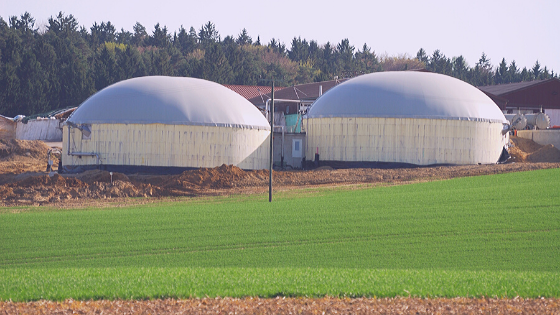For dairy farmers, embracing sustainable practices and protecting the environment are becoming top priorities.
Energy is the most critical area of that commitment to sustainability. From electricity, to heating and cooling systems for cows and to power modern equipment, dairy farmers are looking at ways to modernize their energy use.
“Renewable energy is something that we all need to embrace,” Stearns Bank agriculture account manager Chuck Parker said. “Many different states have begun to come to the table with initiatives that say they will have renewable energy in place for all farmers by 2050.
“You may look at that and say, ‘that’s a long time coming down the pike.’ But it takes a lot of work to get there. That’s where we’re starting from.”
States Adapting To Changes
Certain states have been very active revising their Renewable Portfolio Standards (RPS), which require that a specified percentage of the electricity that utilities sell comes from renewable resources.
States have created these standards to diversify their energy resources, promote domestic energy production and encourage economic development.
According to the Solar Energy Industries Association, 38 states, plus Washington D.C., have a RPS. Iowa was the first state to establish an RPS and since then the others have followed.
Dairy farmers are looking at new opportunities to generate their own energy, especially as installation costs continue to fall for technology. Examples include solar arrays and digestor systems that convert methane produced by cows into renewable energy.
Steph Faymoville, a sales specialist at GEA Farm Technologies, said most dairy farmers are turning to “green energy” as a way to offset other costs.
“Everywhere we go today, we’re surrounded by green energy,” Faymoville said. “Everything from solar panels to windmills are very common. Manure digestors have been around for the last 10-15 years. We’re changing how we look at them. We’ve been getting a better understanding at the science that goes on inside of those.”
Renewable Energy Is Working
When using the digestors, farmers can sell the energy back to the power grid for profit or use it themselves to power their barns.
“At GEA, our equipment is used primarily in fluids to and from the digestor. We don’t build the digestors, but we’re involved in a lot of those projects across the country. It’s amazing to see the strides we’ve made in the past 10-15 years,” Faymoville said.
Dairy producers are participating in U.S. Department of Agriculture programs to conduct energy audits of their operations or to install new technology to generate renewable power.
“Dairy farmers need to be aware of what is happening within their utility and how they can embrace this change,” Parker said. “This is something that is good for all of us. Climate change is something we all need to address.”
Parker said it’s important for dairy farmers to find the right lender that understands the impact that digestors can have on a farm, and the environment.
“Everything is expensive in the dairy industry, including input costs. But if you can find a way to make things less expensive for yourself down the road, you should look into it,” Parker said. “This is something that Stearns Bank will look at to finance. Whether it’s geothermal projects or anything with digestor technology, Stearns Bank would be happy to help you.”


